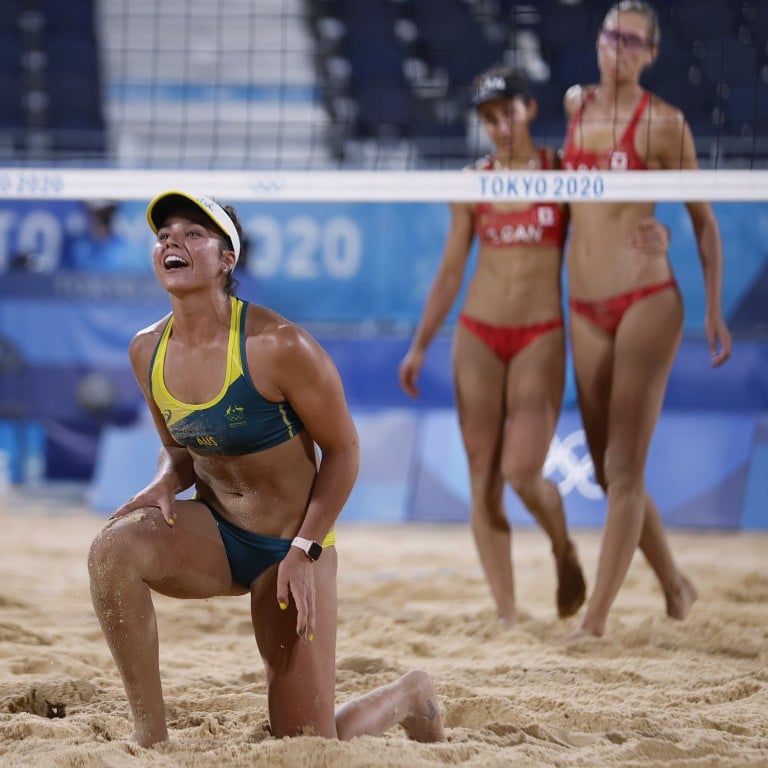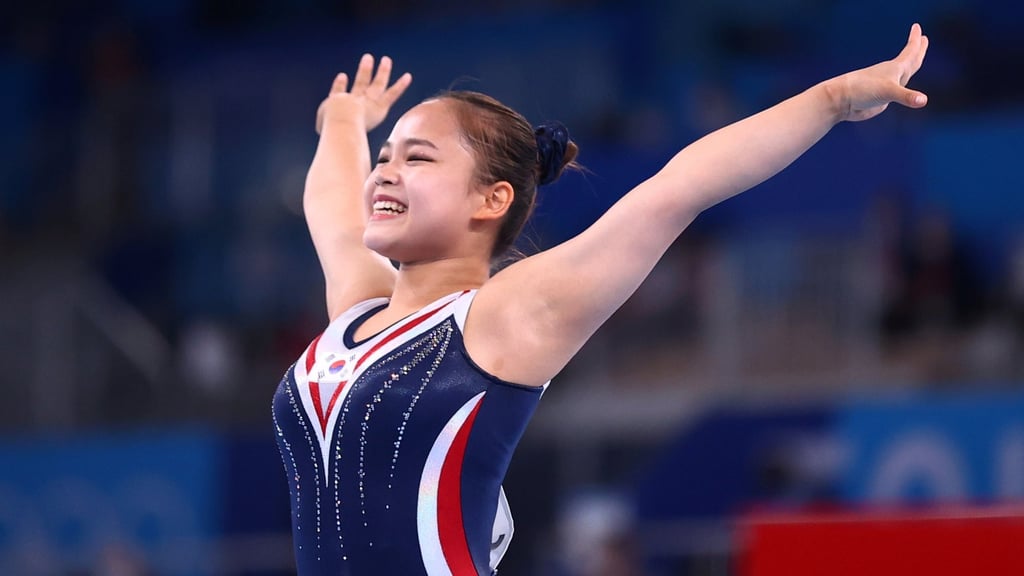Olympics 2020: why are skimpy women’s uniforms still a thing? Simone Biles leads the call to ditch sexualised kits and let athletes wear what’s actually comfortable

- Male swimmers don’t have to wear Speedos, but female gymnasts can only wear unitards with ‘proper necklines’ – otherwise it’s leotards only
- Norway’s beach handball team was fined for wearing shorts instead of bikini bottoms – with side widths no bigger than an iPhone – at another championship event
Women’s beach volleyball players are recommended to have their names on their bikini bottoms but, since space is limited, it’s not compulsory.
Women’s beach handball athletes are required to wear bikini bottoms with a maximum side width of 10cm – smaller than the size of an iPhone.

And in gymnastics, women are allowed to wear a unitard but it “must be of elegant design” and the neckline “must be proper”.
For all the Olympics do to highlight the success of female athletes, each cycle they spotlight the vestiges of sexism baked into the sports – and frequently athletes’ uniforms.
“If there was any kind of advantage to having little fabric, the men would be wearing them too,” said Charlene Weaving, professor and chair of human kinetics department at St. Francis Xavier University in Canada. “If there was any kind of biomechanical advantage, then men would be in Speedos. But they’re not.

“Why cannot it just be performance wear? Those rules impact how we view women athletes and how they view themselves. And it just becomes so entrenched in the culture of the sport that athletes do not even fully understand what’s happening.”
Though it isn’t an Olympic sport, beach handball has helped highlight the ways international sport federations sexualise female athletes in stark contrast with men.